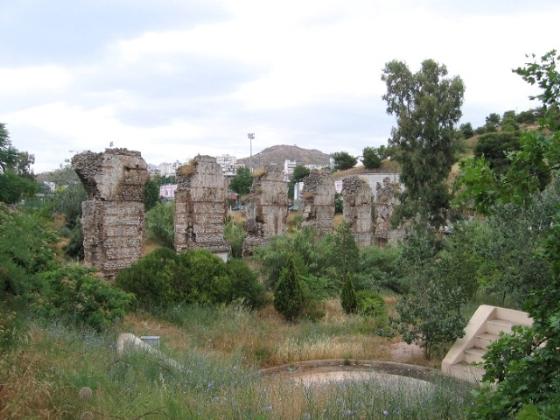
The Greek government is supporting a multi-dimensional plan to put the ancient aqueduct of Athens, a monumental technical construction of the ancient world, back into use; both for covering the present need for irrigation water, and for creating new points of cultural and environmental interest.
1900 years after its construction under the Roman Emperor Hadrian in the second century A.D., the gigantic edifice is still in operation today, managed by the Athens Water Supply and Sewerage Company (EYDAP).
Unfortunately, some 800,000 cubic meters of underground water derived from it are drained off to the sea every year.
The ambitious plan initiated by EYDAP, in cooperation with the Ministry of Culture and Sports, the Athens Prefecture and several Athens municipalities, aspires to rectify this situation and restore both the glory and the functionality of the aqueduct that supplied water to the city for centuries.
A huge project running through Athens municipalities
The underground tunnels of the ancient aqueduct start at the the top of Mount Parnitha, in the north of Athens, and end up in the upscale district of Kolonaki, in the heart of the Greek capital, covering a distance of approximately 20 kilometers (12.4 miles).
The restoration project aims to preserve the monument; use its underground waters in local irrigation; green the areas through which it passes in order to reduce the average temperature of Athens; and enhance its sustainability by connecting it to local cultural, educational and economic activities.
“The underground water route from Parnitha to the center of Athens can evolve into a pipeline for development, greening and oxygen for all the municipalities through which it passes. EYDAP is ready to offer everything needed for the success of the joint effort”, states Harry Sahinis, the CEO of EYDAP.
The public company is providing the resources for the strategic planning of the project, with the purpose of submitting the proposal for EU funding by the European Structural and Investment Funds (ESIF) as part of the upcoming Partnership Agreement 2021-2027.
Long history of the ancient Athens aqueduct
Begun in 125 AD on the orders of the emperor Hadrian, the building of Athens aqueduct was completed in 140 AD.
Among its most admirable features is the fact that it was made to collect water not only from the initial source, but also to pick up additional quantities from other sources along the way through supplementary tunnels.
Parts of the aqueduct are still preserved in the Olympic Village of Athens, in Marousi, Halandri and Neo Psychiko, Nea Ionia, Nea Philadelphia and Ambelokipi.
One of its terminal points, on Mount Lycabettus, in the Kolonaki district, served as a distribution basin. Another one has been found in the Agora of Athens, connected to additional basins and branches.
The ancient aqueduct remained the main source of water for the city of Athens consistently for over a millennium — until the time of the Turkish occupation in 1456.
When Athens was liberated after the Greek War of Independence, the new city authorities started to gradually repair the aqueduct system and restore its use.
See all the latest news from Greece and the world at Greekreporter.com. Contact our newsroom to report an update or send your story, photos and videos. Follow GR on Google News and subscribe here to our daily email!



